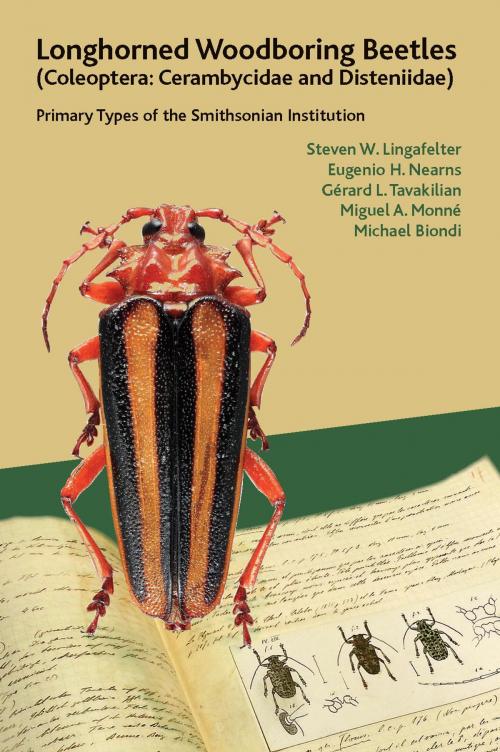Longhorned Woodboring Beetles (Coleoptera: Cerambycidae and Disteniidae)
Primary Types of the Smithsonian Institution
Nonfiction, Science & Nature, Science, Biological Sciences, Entomology, Reference & Language, Reference, Bibliographies| Author: | Steven W. Lingafelter, Eugenio H. Nearns, Gérard L. Tavakilian, Miguel A. Monné, Michael Biondi | ISBN: | 9781935623410 |
| Publisher: | Smithsonian | Publication: | September 2, 2014 |
| Imprint: | Smithsonian Institution Scholarly Press | Language: | English |
| Author: | Steven W. Lingafelter, Eugenio H. Nearns, Gérard L. Tavakilian, Miguel A. Monné, Michael Biondi |
| ISBN: | 9781935623410 |
| Publisher: | Smithsonian |
| Publication: | September 2, 2014 |
| Imprint: | Smithsonian Institution Scholarly Press |
| Language: | English |
In terms of quantity and breadth, the Smithsonian Institution’s collection of longhorned woodboring beetles is one of the most important in the world. The effort to establish and describe this collection began as early as 1889, when the Smithsonian hired its first coleopterist (who was also only the second salaried entomologist at the Institution). In the years that followed, the collection grew thanks to the work of not only Smithsonian and U.S. Department of Agriculture entomologists, but also passionate amateur coleopterists who collected thousands of beetle specimens as they traveled the world for their professional occupations and then donated their unique collections to the Smithsonian. By 1957, the collection included nearly 200,000 specimens from around the world. Longhorned Woodboring Beetles (Coleoptera: Cerambycidae and Disteniidae): Primary Types of the Smithsonian Institution is the first complete catalog of Coleoptera primary types housed at the Smithsonian and includes stunning full-color images of each type specimen. The product of more than a decade of curatorial research and care, it reaffirms the superior international status of this truly remarkable collection.
In terms of quantity and breadth, the Smithsonian Institution’s collection of longhorned woodboring beetles is one of the most important in the world. The effort to establish and describe this collection began as early as 1889, when the Smithsonian hired its first coleopterist (who was also only the second salaried entomologist at the Institution). In the years that followed, the collection grew thanks to the work of not only Smithsonian and U.S. Department of Agriculture entomologists, but also passionate amateur coleopterists who collected thousands of beetle specimens as they traveled the world for their professional occupations and then donated their unique collections to the Smithsonian. By 1957, the collection included nearly 200,000 specimens from around the world. Longhorned Woodboring Beetles (Coleoptera: Cerambycidae and Disteniidae): Primary Types of the Smithsonian Institution is the first complete catalog of Coleoptera primary types housed at the Smithsonian and includes stunning full-color images of each type specimen. The product of more than a decade of curatorial research and care, it reaffirms the superior international status of this truly remarkable collection.















